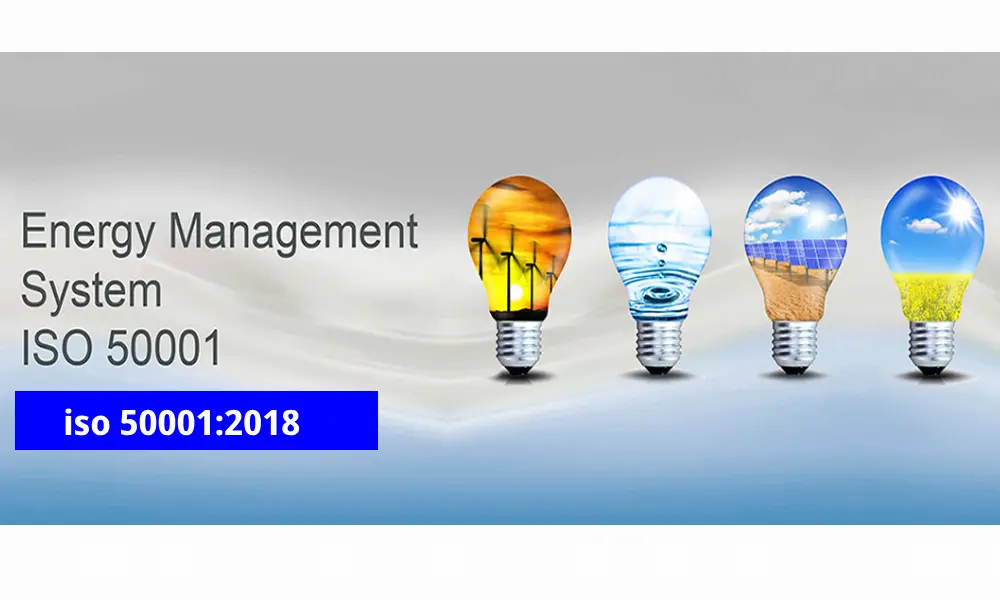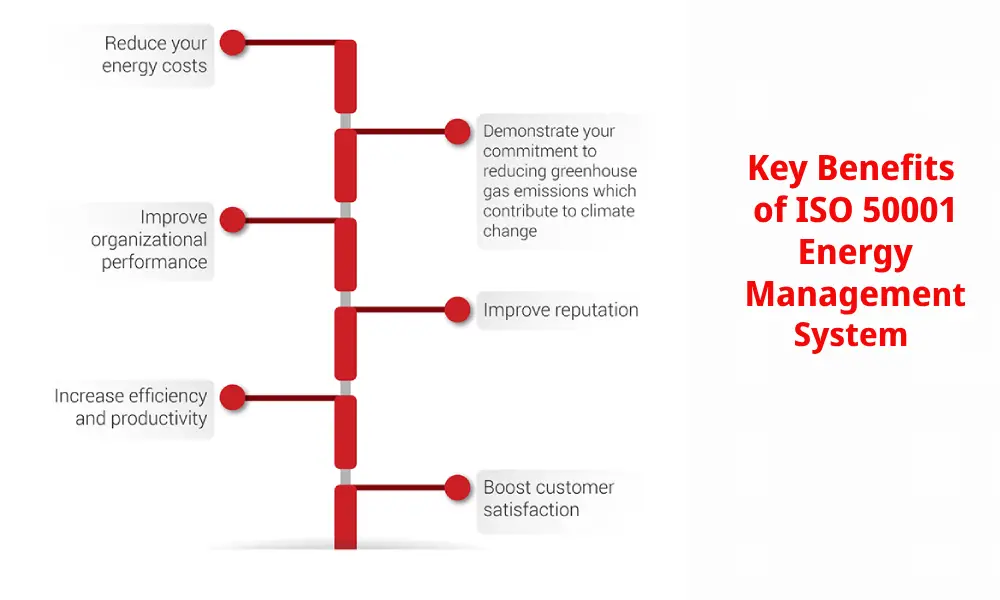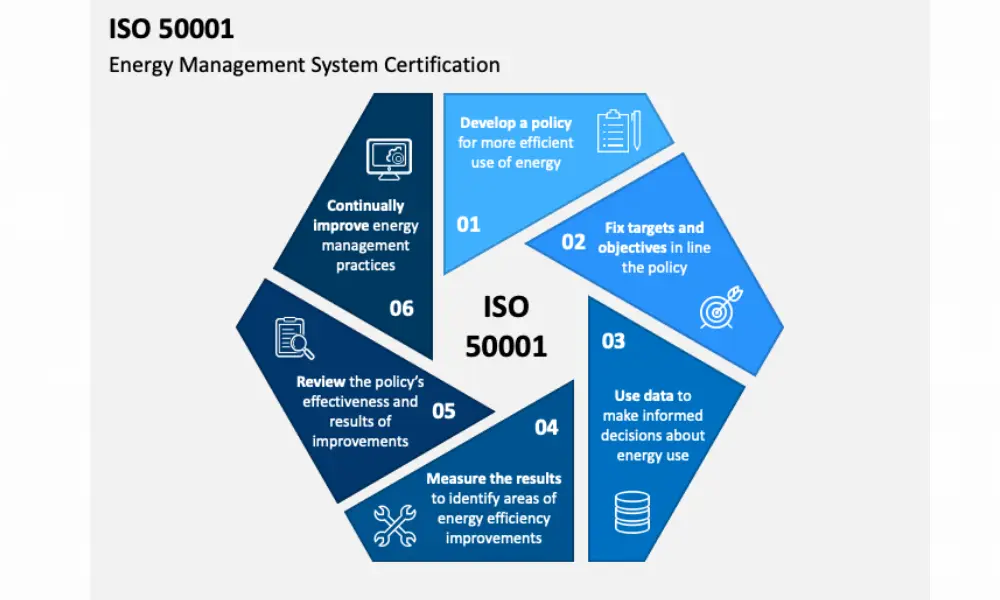As energy consumption continues to rise and sustainability becomes a global priority, organizations are seeking structured ways to improve energy performance and reduce costs. The ISO 50001 Energy Management System is an internationally recognized framework that helps organizations of all sizes to establish an efficient and sustainable energy management system ISO 50001. This standard plays a crucial role in reducing environmental impact while increasing operational efficiency.
What is ISO 50001 Energy Management System?
ISO 50001 Energy Management System is an internationally recognized standard developed to help organizations systematically improve their energy performance. It provides a robust framework for establishing energy policies, setting objectives, and continually improving energy use through measurable steps.
For companies wondering what is energy management system ISO 50001, it’s not just about reducing energy consumption—it’s about transforming how energy is managed across the organization to support sustainability and cost-efficiency.

Why Your Business Needs an ISO 50001 Energy Management System
Implementing an ISO energy management system ensures that your organization is aligned with global best practices. It enables energy savings, reduces greenhouse gas emissions, and enhances environmental responsibility.
Whether you’re a manufacturing plant, office complex, or service provider, the energy management system ISO50001 can be adapted to any sector, helping organizations reduce risks associated with energy supply and improve their competitive edge.
read about:
energy performance indicators iso 50001
Key Benefits of ISO 50001 Energy Management System

Adopting the ISO 50001 energy management system offers several measurable benefits:
- Reduction in energy costs and operational expenses.
- Enhanced regulatory compliance and reduced carbon footprint.
- Improved corporate image and stakeholder trust.
- Better utilization of data and resources through structured monitoring.
Steps to Achieve ISO 50001 Certification
Getting an ISO 50001 certification involves a structured approach. Organizations typically go through the following steps:
- Gap Analysis: Identify existing processes and how they align with ISO for energy management requirements.
- Policy Development: Define clear energy goals and assign roles.
- Data Collection: Monitor energy use to establish baselines.
- Implementation: Apply energy controls and best practices.
- Internal Audits: Evaluate compliance and areas for improvement.
- Certification Audit: Final assessment by an accredited body.
By achieving iso energy management system certification, your business signals a long-term commitment to sustainability and operational excellence.
read about:
iso 50001 gap analysis checklist
How ISO 50001 Supports Global Sustainability Goals

The ISO 50001 energy management framework supports global efforts toward reducing energy-related impacts. It aligns with initiatives like the UN Sustainable Development Goals (SDGs), particularly SDG 7 (Affordable and Clean Energy) and SDG 13 (Climate Action).
Investing in iso50001 energy management is more than a technical upgrade—it’s a strategic move that benefits the planet and boosts long-term profitability.
Why Get ISO 50001 Certification Through ISO CERT INTERNATIONAL?
Choosing ISO CERT INTERNATIONAL for your ISO 50001 certification guarantees expert guidance, global recognition, and a streamlined process that maximizes your energy savings.
Our experienced auditors and technical advisors ensure that your ISO 50001 energy management system is not only compliant but also optimized for long-term performance.
With ISO CERT INTERNATIONAL, you gain:
- Faster certification timelines and minimal disruption to operations.
- Support tailored to your industry, whether you’re in manufacturing, hospitality, or services.
- A trusted name in ISO for energy management with global credibility.
If you’re aiming to implement an iso energy management system that drives real change, ISO CERT is your ideal partner.
What is the difference between ISO 9001 and ISO 50001?
Key Differences Between ISO 9001 and iso 50001:2018
Scope
- ISO 9001: Quality Management System (QMS)
- ISO 50001: Energy Management System (EnMS)
Objective
- ISO 9001: Ensure consistent quality of products/services and improve customer satisfaction.
- ISO 50001: Improve energy efficiency and reduce energy-related costs and emissions.
Focus Area
- ISO 9001: Customer satisfaction, process efficiency, continual improvement.
- ISO 50001: Energy performance, energy planning, and operational control over energy use.
Core Requirements
- ISO 9001: Quality objectives, leadership commitment, risk-based thinking, process control.
- ISO 50001: Energy review, energy baseline, energy performance indicators, and monitoring.
Applicability
- ISO 9001: Universal – for all industries and organizations.
- ISO 50001: Best for energy-intensive sectors but applicable to any organization.
Main Benefits
- ISO 9001: Higher quality, improved customer trust, better operational control.
- ISO 50001: Lower energy bills, reduced carbon footprint, enhanced sustainability.
What is the difference between ISO 14001 and 50001?
Key Differences Between ISO 14001 and ISO 50001
Scope
- ISO 14001: Environmental Management System (EMS)
- ISO 50001: Energy Management System (EnMS)
Objective
- ISO 14001: Manage and reduce the overall environmental impact of organizational activities.
- ISO 50001: Improve energy efficiency and reduce energy-related costs and greenhouse gas emissions.
Focus Area
- ISO 14001: Broader environmental aspects including waste, pollution, resource use, and compliance.
- ISO 50001: Specific focus on energy use, energy efficiency, and continual energy performance improvement.
Core Requirements
- ISO 14001: Environmental policy, aspects and impacts evaluation, legal compliance, and environmental objectives.
- ISO 50001: Energy policy, energy review, baseline and performance indicators, energy objectives.
Applicability
- ISO 14001: Applicable to all organizations aiming to improve their environmental performance.
- ISO 50001: Applicable to organizations that seek to manage and reduce energy consumption.
Main Benefits
- ISO 14001: Reduced environmental impact, improved legal compliance, enhanced reputation.
- ISO 50001: Reduced energy costs, improved energy efficiency, lower greenhouse gas emissions.
Conclusion: Is ISO 50001 Energy Management System Right for You?
If you’re looking to optimize energy usage, enhance compliance, and gain a competitive advantage, the ISO 50001 energy management system is a smart investment. It brings structure, accountability, and continuous improvement to how your organization manages energy.
Whether you’re preparing for your iso 50001 certification or simply exploring iso energy management, this standard delivers a roadmap for achieving energy efficiency goals and long-term success.

